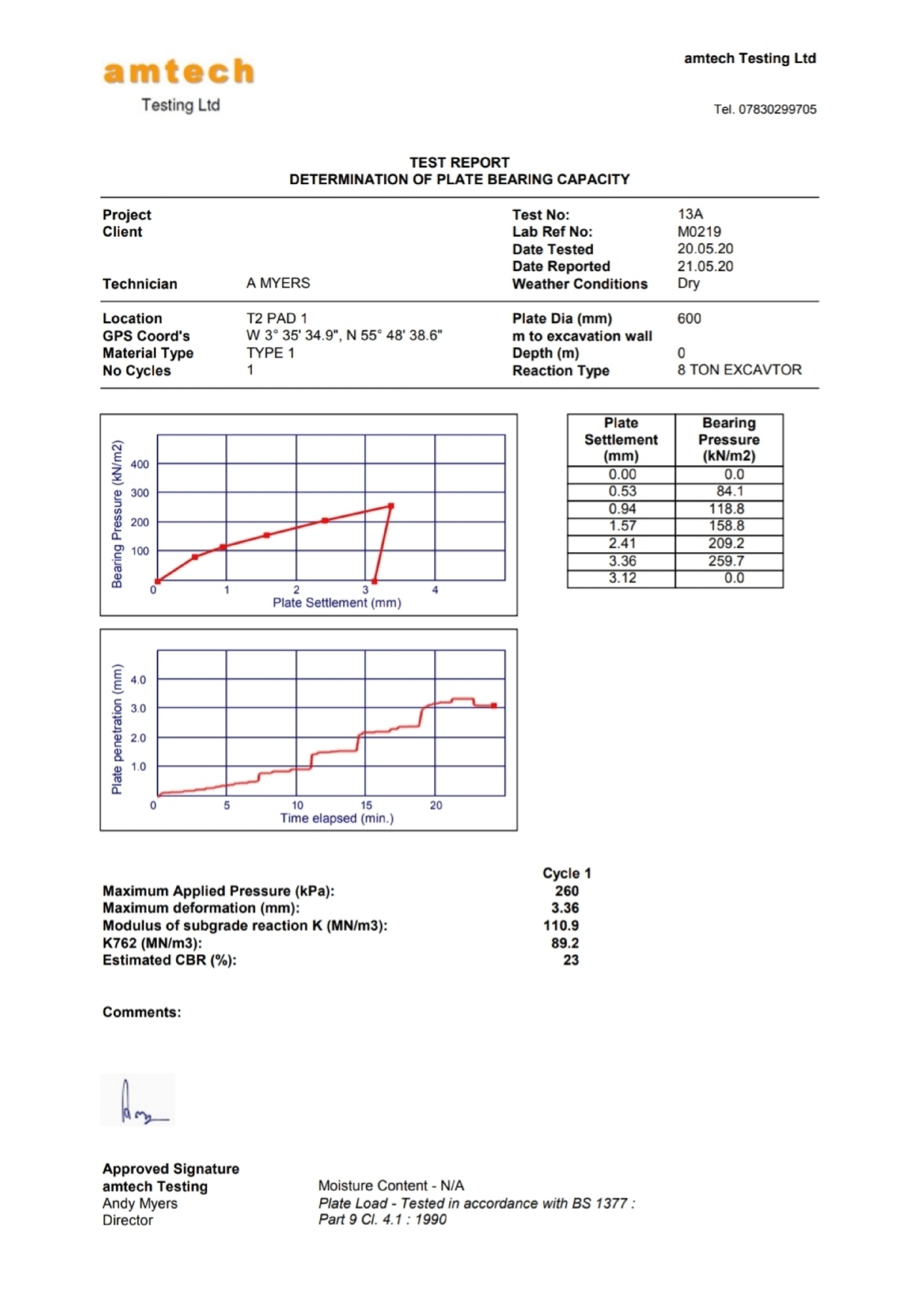amtech can carry out Plate load testing throughout the UK. This is a service carried out either pre-construction or post-construction.
Pre-construction, using results as a guide to your construction decisions from pavement, substructure design for strength to piling pads and crane bases for settlement.
Post-construction results from stabilised sub base to newly-built roads, industrial units, and a wide range of civil works.
amtech offers both types of plate bearing test, these being a CBR Test (California Plate Bearing Ratio) and the second a Incremental Plate Load Test. Both of these tests offer reliable results and can be used to establish the vertical strength of subgrade, fill, capping, sub-base and stabilised material.
Both methods of plate testing will require suitable kentledge which is usually in the form of a site excavator or similar item of plant, available on-site provided by the client.
amtech Testing has the capacity to carry out Plate CBR (California Bearing Ratio Testing) and Incremental Plate Load testing Which are performed in accordance with, BS1377-9:1990 and IAN73/06. An indication of test results can be given while on site. Followed by test reports to be supplied in electronic format within a specified timescale.

The Types of Testing
amtech offers two on-site services. Both services provide much-needed data about your site and can help you decide on the plan of action before construction begins and also give you much needed data on finished construction layers e.g. Cut and fill, formation etc.
CBR Testing (California Bearing Ratio)
This standard test has been a mainstay of civil engineering since the 1930s.
The Plate Bearing test method for achieving CBR value allows testing over an increased surface area using 300mm, 450mm and 600mm plate sizes rather than that of a traditional 50mm CBR plunger. This in turn, enables testing of all cohesive and coarse granular materials.
CBR testing is rigorous and requires multiple tests across the site. Normally carried out at surface level or at varying depths. This gives you a good indication of the strength of your sub-soil layers and sub-base before any construction takes place,
CBR tests also give you a % strength result on completed works.
A CBR value is usually represented as a percentage. A Clay usually achieves around 2% with compacted or undisturbed sands up to around 10%. A well compacted suitable fill would achieve 5% and above with a sub-base achieving 15% to 30% CBR and above. For particle sizes larger than 20mm you will need to look for Plate Bearing Tests.
Incremental Plate Load Testing
The second test is the incremental plate load which is used to measure the vertical deformation (settlement) and strength characteristics of the in-situ soil by assessing the force and amount of penetration and time taken for a rigid plate to penetrate Into the ground.
This test method is widely used when establishing the strength of crane bases, piling pads or crane outriggers, as well as foundations for building slabs or commercial building stanchion bases, to ensure the required loading can be achieved.
amtech are able to provide a maximum load of 25 tons (245kN)
You can find out which sectors suit your needs by getting in contact via the contact page.
Below is an example report…
